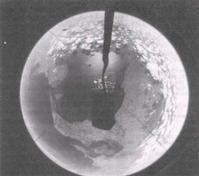


Memories of the Bureau, 1946 to 1962
Foreword
Terminology
Prologue
Preface
Chapter 1: The Warren Years, 1946 to 1950
Chapter 2: International Meteorology
Chapter 3: The Timcke Years, 1950 to 1955
Chapter 4: A Year at the Massachusetts Institute of Technology
Chapter 5: The Dwyer Years, 1955 to 1962
Leonard Joseph Dwyer—A Complex Character
Reorganising the Bureau
Public Weather Services
Forecasts for the General Public
Importance of Radio Stations
The Advent of Television
Automatic Telephone Forecast Service
Beacons
Wording and Verification of Forecasts
Warnings
Services for Aviation
Atomic Weapons Tests
Atomic Weapons Tests—Mosaic G1 and G2
Atomic Weapons Tests—Buffalo 1, 2, 3 and 4
Atomic Weapons Tests—Operations Antler, 2 and 3
Atomic Weapons Tests—Minor Trials
Instruments and Observations
Radiosondes
Radar/Radio Winds and Radar Weather Watch
Automatic Weather Stations
Sferics
Meteorological Satellites
Telecommunications
Tropical Cyclones
Bureau Conference on Tropical Cyclones
International Symposium on Tropical Cyclones, Brisbane
Hydrometeorology
Design of Water Storages, Etc
Flood Forecasting
Cloud Seeding
Reduction of Evaporation
Rain Seminar
Cloud Physics
Fire Weather
Research and Special Investigations
International Activities
The International Geophysical Year
The Antarctic and Southern Ocean
International Symposium on Antarctic Meteorology
International Antarctic Analysis Centre
ADP, EDP and Computers
Training
Publications
Management Conference
Services Conference
CSIRO and the Universities
Achievements of the Dwyer Years
Chapter 6: A Springboard for the Future
Appendix 1: References
Appendix 2: Reports, Papers, Manuscripts
Appendix 3: Milestones
Appendix 4: Acknowledgements
Appendix 5: Summary by H. N. Warren of the Operation of the Meteorological Section of Allied Air Headquarters, Brisbane, 1942–45
Endnotes
Index
Search
Help
Contact us

The International Geophysical Year (continued)
Len Dwyer gave me the responsibility of organising an Antarctic symposium held in Melbourne in February 1959, details of which are also given later. I also presented a paper to a symposium on Antarctic meteorology held in Buenos Aires in November 1959.In addition to the Antarctic programs we had special IGY meteorological programs in Australia. Unfortunately meteorological satellites had not been developed but we made special efforts to increase the frequency and maximum altitude of upper wind and radiosonde observations, especially during the special ten-day meteorological intervals. Vic Hopper of the Physics Department of the University of Melbourne was especially active in promoting the use of balloons to make measurements in the upper atmosphere and displayed remarkable ingenuity in developing a simple valve consisting of a metal cylinder, a ping-pong ball and a piece of string to reduce pressure in the balloon at high altitudes so that considerably greater heights could be achieved. He used these balloons, carrying a simple camera, to obtain photographs of Port Phillip Bay from a high altitude.

high-altitude balloon launched by Professor Vic Hopper 27 January 1961. Vic had participated in upper atmosphere research programme of the IGY and had developed a special pressure-release valve which enabled unmanned balloons to ascend to great altitudes.
The Bureau also made a major contribution to the IGY by providing tabulations of data from observations in Australia which the WMO Secretariat recorded on microfilm for those wishing to carry out further research. Phillpot (1997) refers to the use of IGY data by Taljaard and Van Loon of South Africa in preparing southern hemisphere charts for the IGY period.
Weather News Item 497 in issue No 68 April 1962 reports an ANZAAS meeting in Adelaide in February of that year at which I delivered a paper on the achievements of the IGY. The paper listed important achievements of the IGY as:
- the gathering of data from Antarctica;
- the exploitation of rockets and satellites for meteorological purposes;
- the use of automatic methods in collecting and processing meteorological data; and
- the stimulation of meteorological research by promoting the exchange of information and ideas between meteorologists of many countries.
People in Bright Sparcs - Dwyer, Leonard Joseph; Phillpot, Henry Robert
 |
Bureau of Meteorology |  |
© Online Edition Australian Science and Technology Heritage Centre and Bureau of Meteorology 2001
Published by Australian Science and Technology Heritage Centre, using the Web Academic Resource Publisher
http://www.austehc.unimelb.edu.au/fam/1113.html